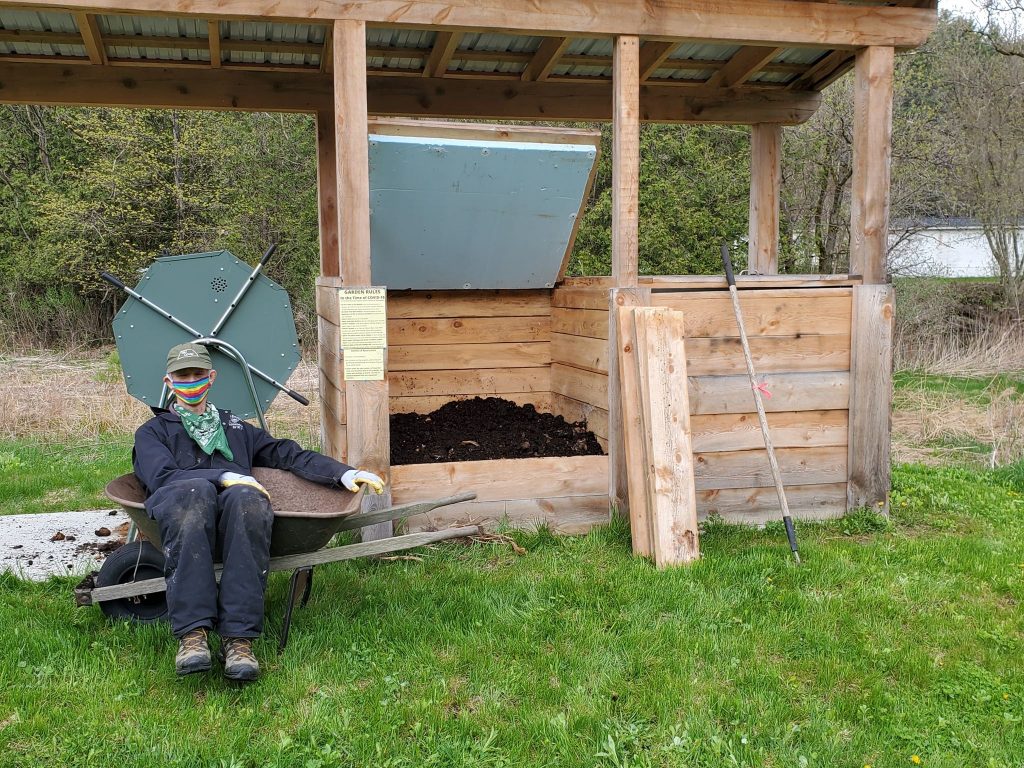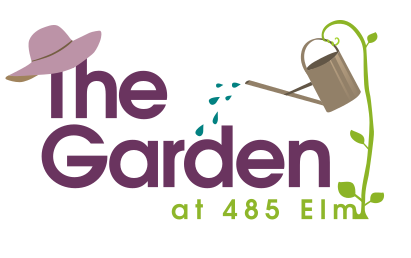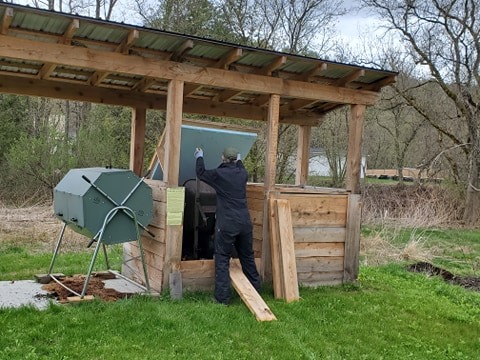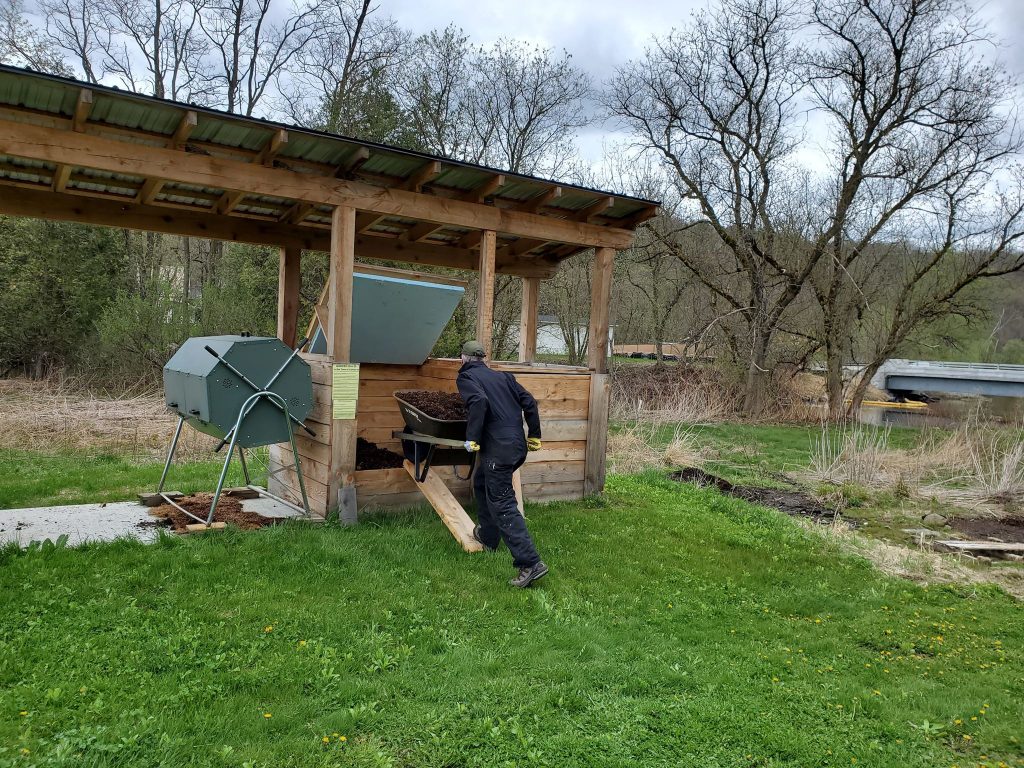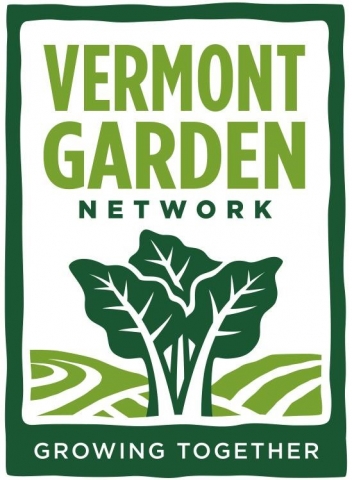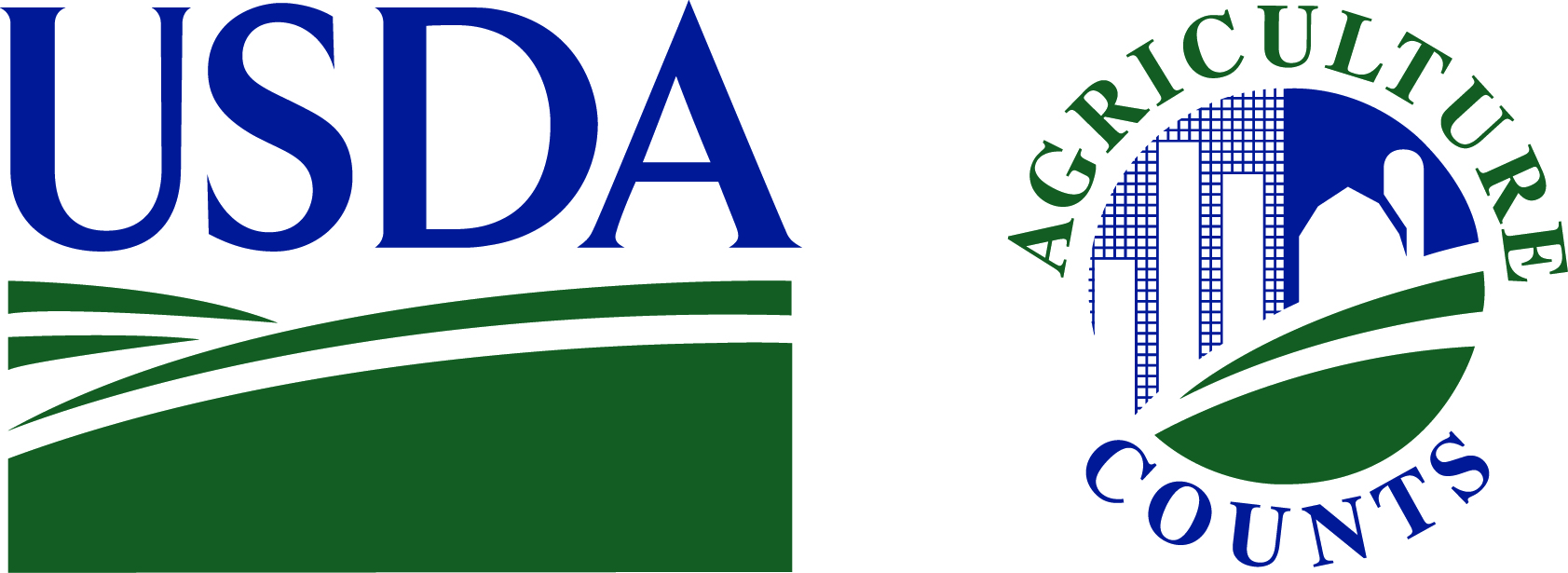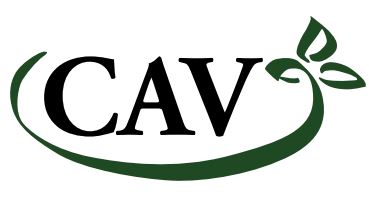Back in the beforetimes . . .
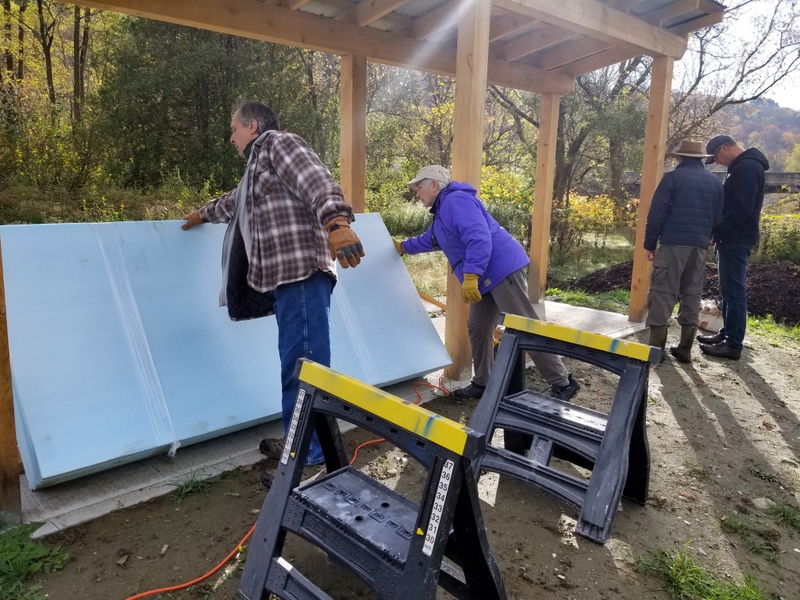
We certainly didn’t incorporate pandemic considerations. Still, that’s what happened, so that’s what we’re doing now.
In May 2020, Compost Team dug into Compostville for the first time this season—and the first time during COVID-19. We instituted the same safety rules as in the community garden. But that wasn’t enough.
COVID-19 resources from the Composting Association of Vermont awoke us to the game-changing difference between the garden and Compostville is exposure to feedstocks (the food scraps gardeners will bring). The novel coronavirus brings potential for infection via aerosolized pathogens. Thus, no at-risk team members or the general garden population will contact feedstocks.
Two compost team members who are not high-risk, and who have more community exposures than many of us, volunteered to collected and process feedstocks using PPE, distancing, and the safest practices we can determine. Without these two volunteers, Compostville would not be able to accept food scraps amid the pandemic.
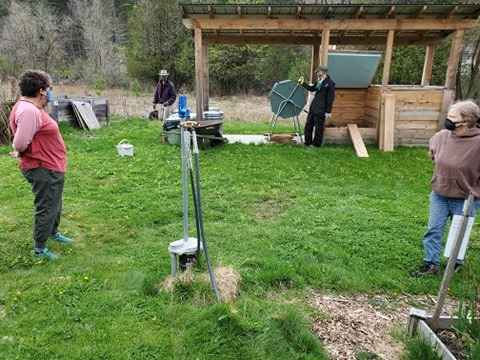
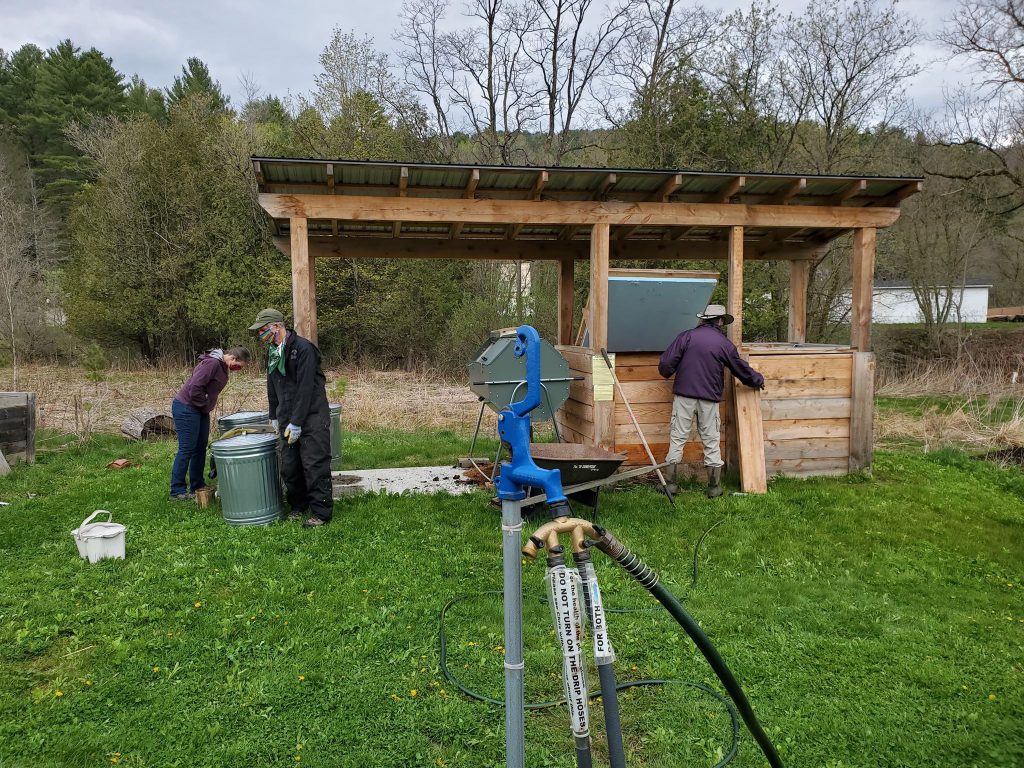
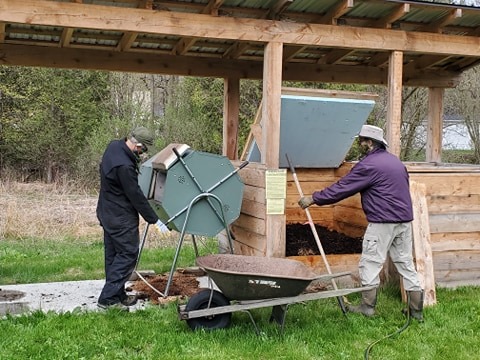
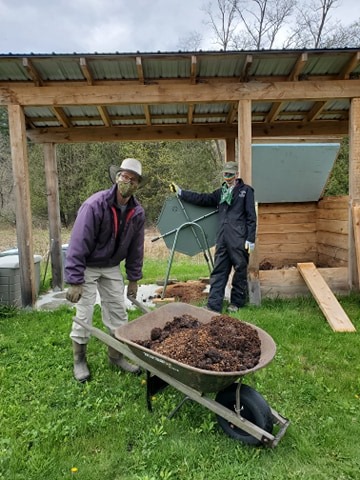
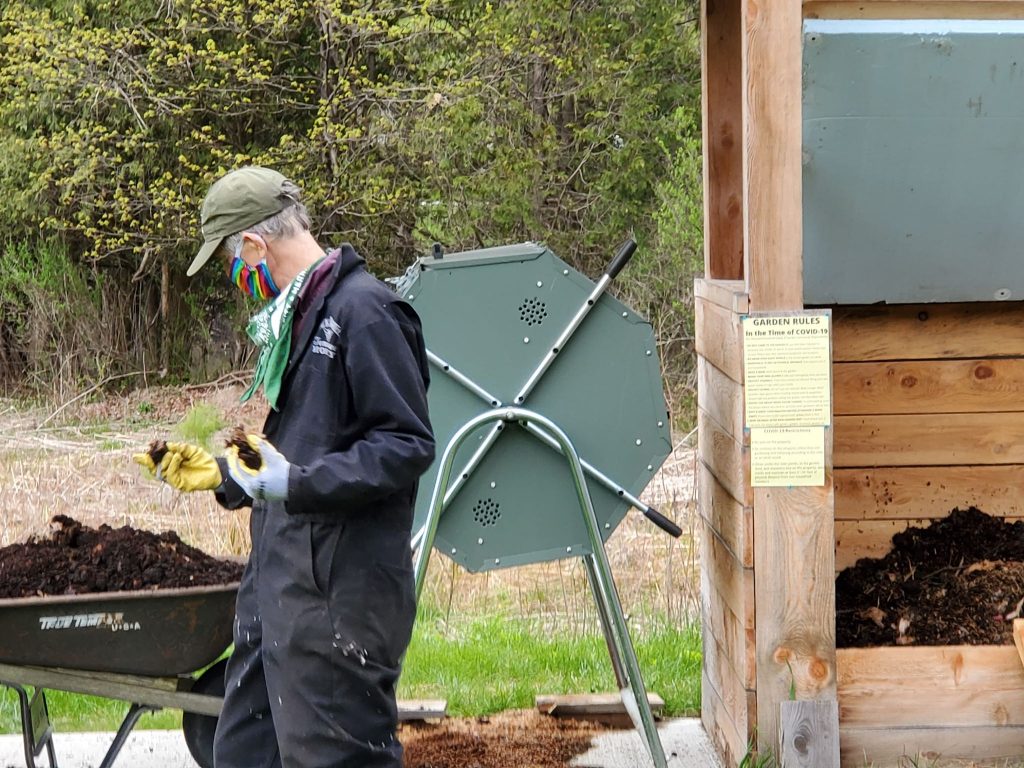
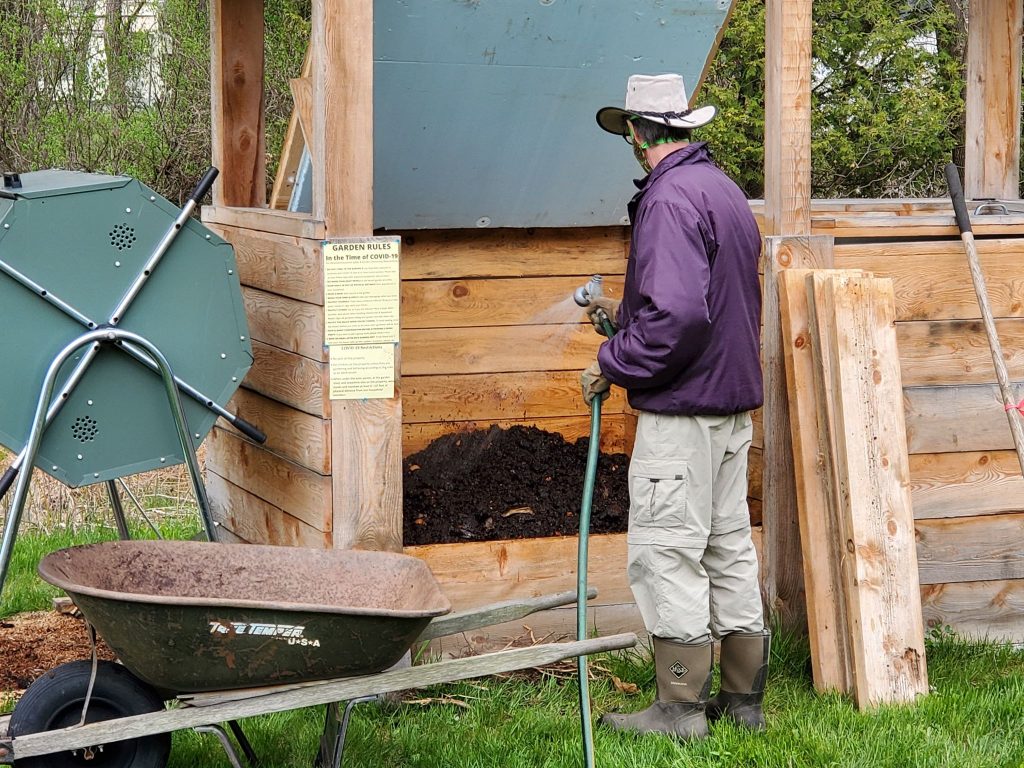
This is how team members move compost from one bin to another.
Next steps: Making signs, arranging food scrap drop-off days and scheduling teamwork of taking the compost’s temperature, turning the tumbler, and writing notes in the compost logbook. With a great team like this and the ongoing support of our grant partners, we will succeed in continuing our mission to
- Turn garden waste and gardeners’ food scraps into nutrients that feed this garden
- Stay safe
- Have fun
doing this important work!
